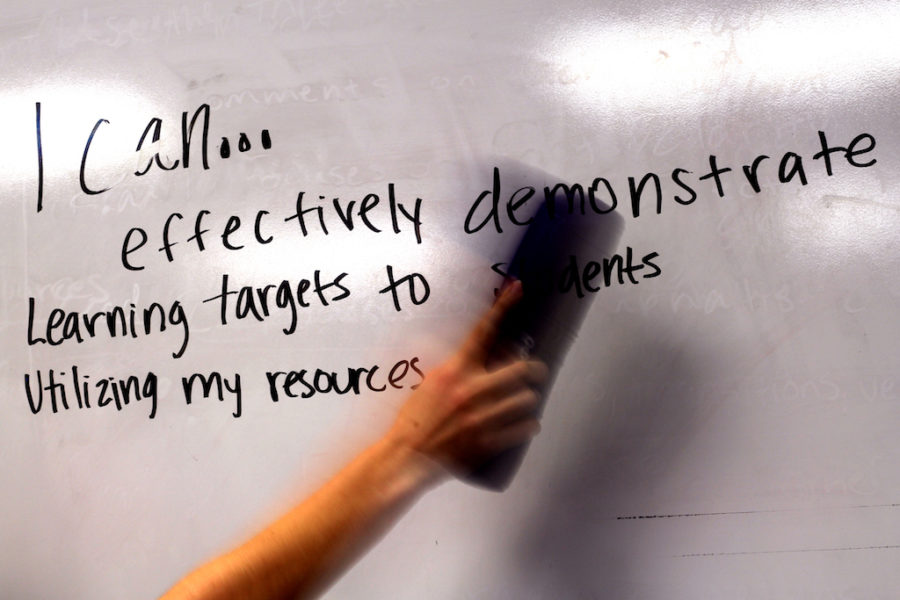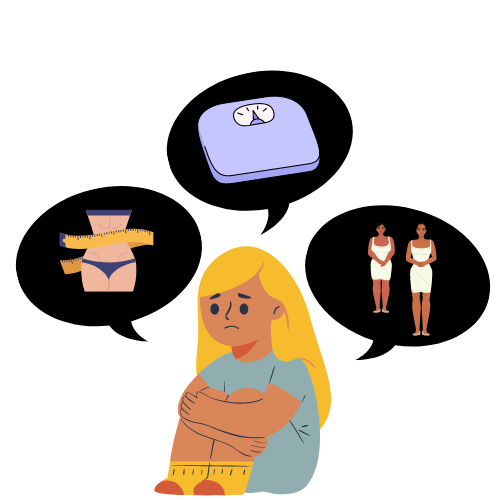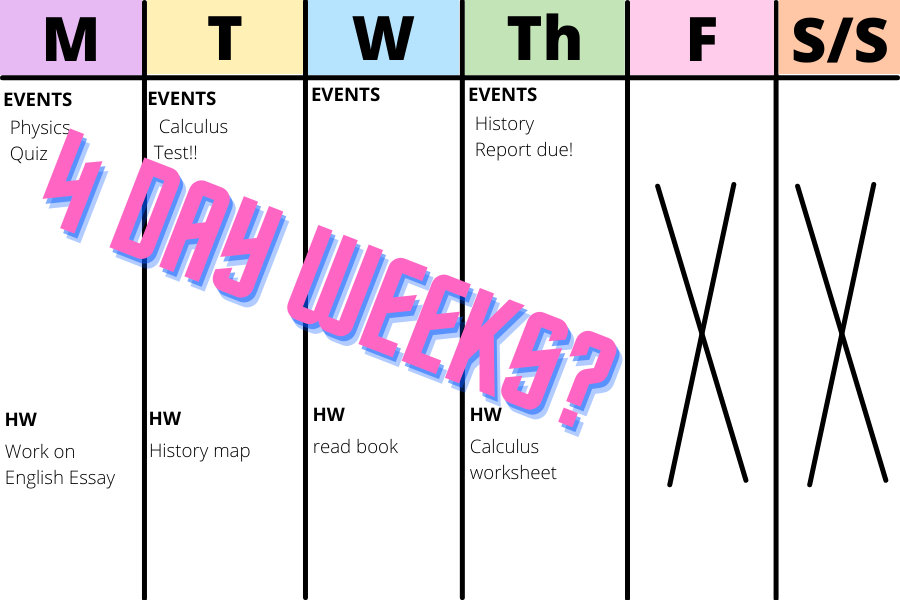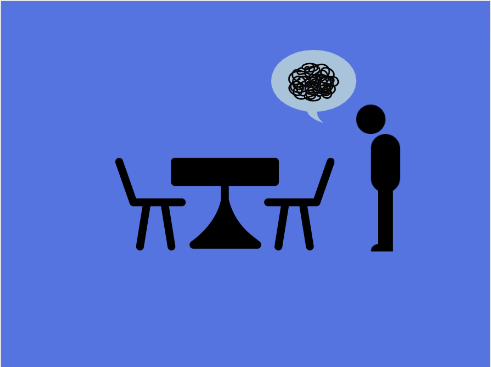As students shuffle into class, they pick up their assignments, sit down, and lift their eyes from their phones to look around the classroom. Up on the board the words “I can” are printed boldly, followed by a list of criteria for the day. These memos, commonly known as learning targets, are absorbed by some, but completely ignored by others.
Teachers are required to write daily learning targets on classroom whiteboards for student reference. Administration’s criteria for learning targets changed this semester when they added a step-by-step process to meet the academic goal. Teachers spend hours training, planning, and writing to provide the written objectives for students.
Learning targets are meant to benefit the classroom by helping teachers stay on task and by providing students with the curriculum for the day/week. However, the execution of the targets can create a negative attitude towards learning in students. In an online survey with 174 responses from the student body, 58 percent of students said they do not find the objectives helpful at all. For learning targets to achieve their goal of assisting teachers and students, they must change.
Lack of commitment from teachers eliminates the potential benefit of learning targets from the beginning. For the objectives to become effective, teachers must integrate the targets into their daily classroom structure. To simply write the targets on a board, or neglect to write them at all as a handful of teachers do, is a failure in itself.
One system helpful for students is to list the procedures for the class each day instead of a formal target. Some teachers already provide students with a to-do list or schedule for the day that accurately reflects what they will learn or accomplish in the 45 minute period. This more effectively answers the question, “What are we doing today?” The wording is crucial for these lists in order to achieve what learning targets aim to. Each aspect of the list would go beyond an action by adding that brief second layer of why or for what students will do.
In the criteria for learning targets provided by the administration, teachers are required to “convert [learning objectives] into a student-friendly language.” Many students may ignore these wordy sentences or skim over them without even processing their meaning.
Complicated language removes the easily accessible quality from learning targets. Principal Chris Mayfield said the learning targets can act as a quick answer to the common classroom question of “What are we doing today?” However, if teachers do not actively transform their learning targets into simpler language, it cannot serve as a quick and effective resource to students. Task lists are simpler to read and understand since they do not require unnecessary vocabulary.
“While I’m sure the learning target was intended in its fancy wording to encourage further exploration on the topic, in reality, it really only ever discourages that exploration,” one poll respondent said. “[A learning target] provides teachers and students with a simple structured concept to teach to a bare minimum. In the end, [learning targets] stifle both creativity and productivity in the classroom, creating an inadequate learning environment for any student and teacher.”
Furthermore, some teachers introduce their learning targets with a mocking tone that automatically influences students. When teachers introduce the concept of learning targets with an “admin-made-me-do-this” tone, students are less likely to use the targets as a legitimate resource. The written goals are designed to improve students’ atmosphere at the school, but the teachers must embrace the process first. With simple lists, it’s simpler for teachers to construct. Since objective lists meet the students’ need greater than learning targets do, they will be more eager to read them.
The potential benefit of learning targets exists. In a perfect world, they would be made more accessible by teachers or be taken more seriously. Administration cannot control teachers, and the learning targets need to be redesigned in a teacher-and-student-friendly manner. They must consider their students’ views and mindsets and change their approach to learning targets.






















